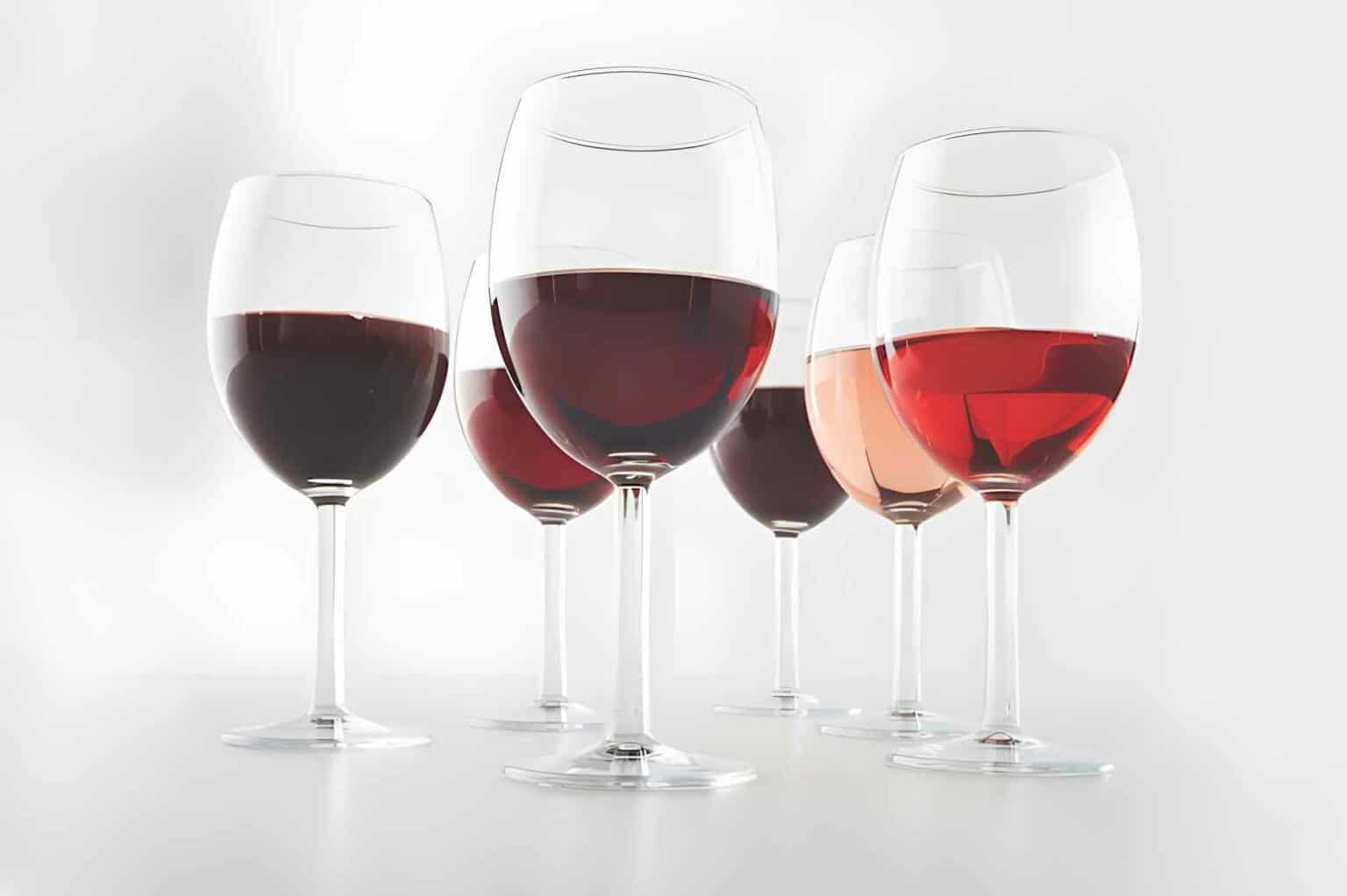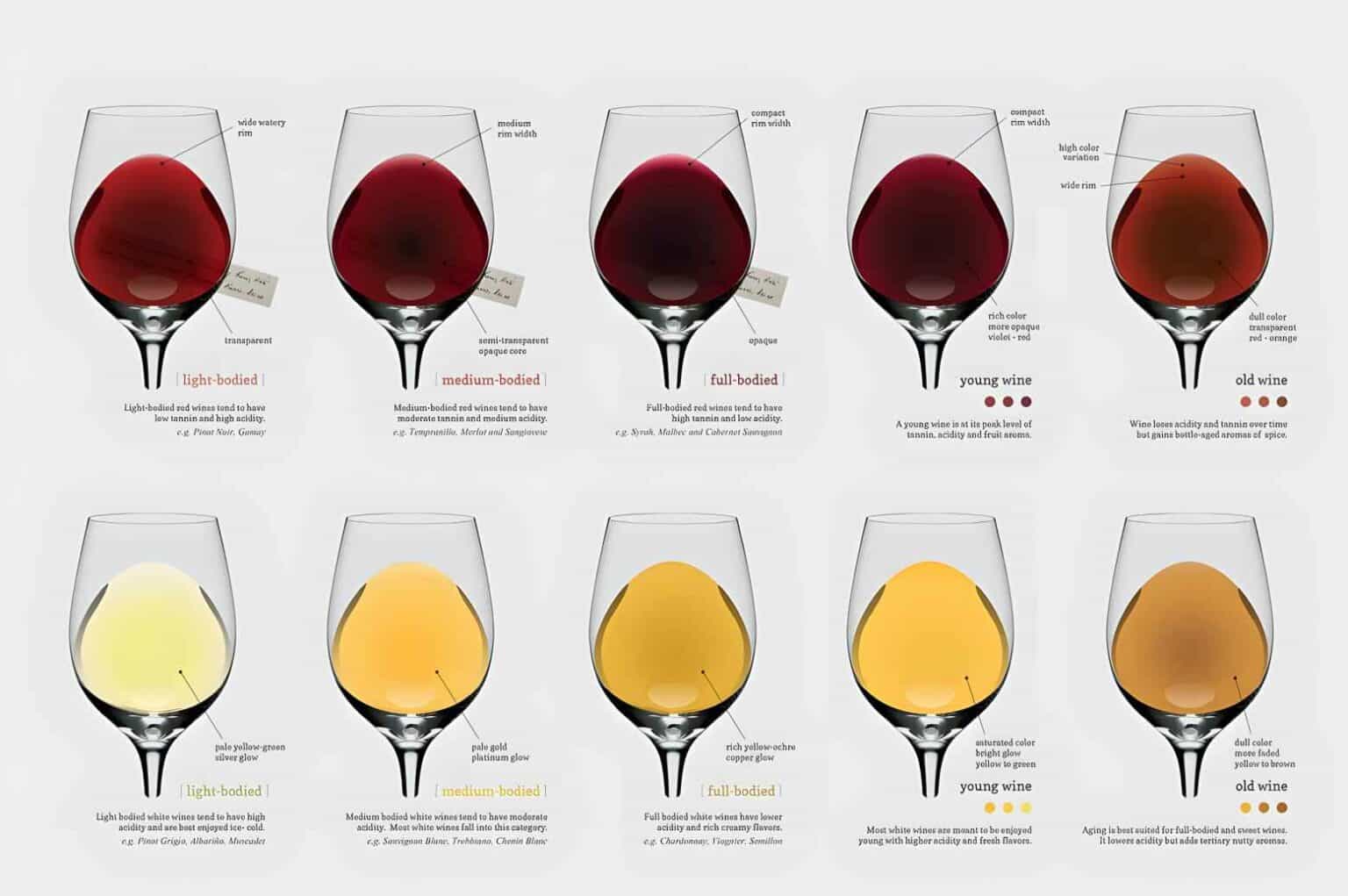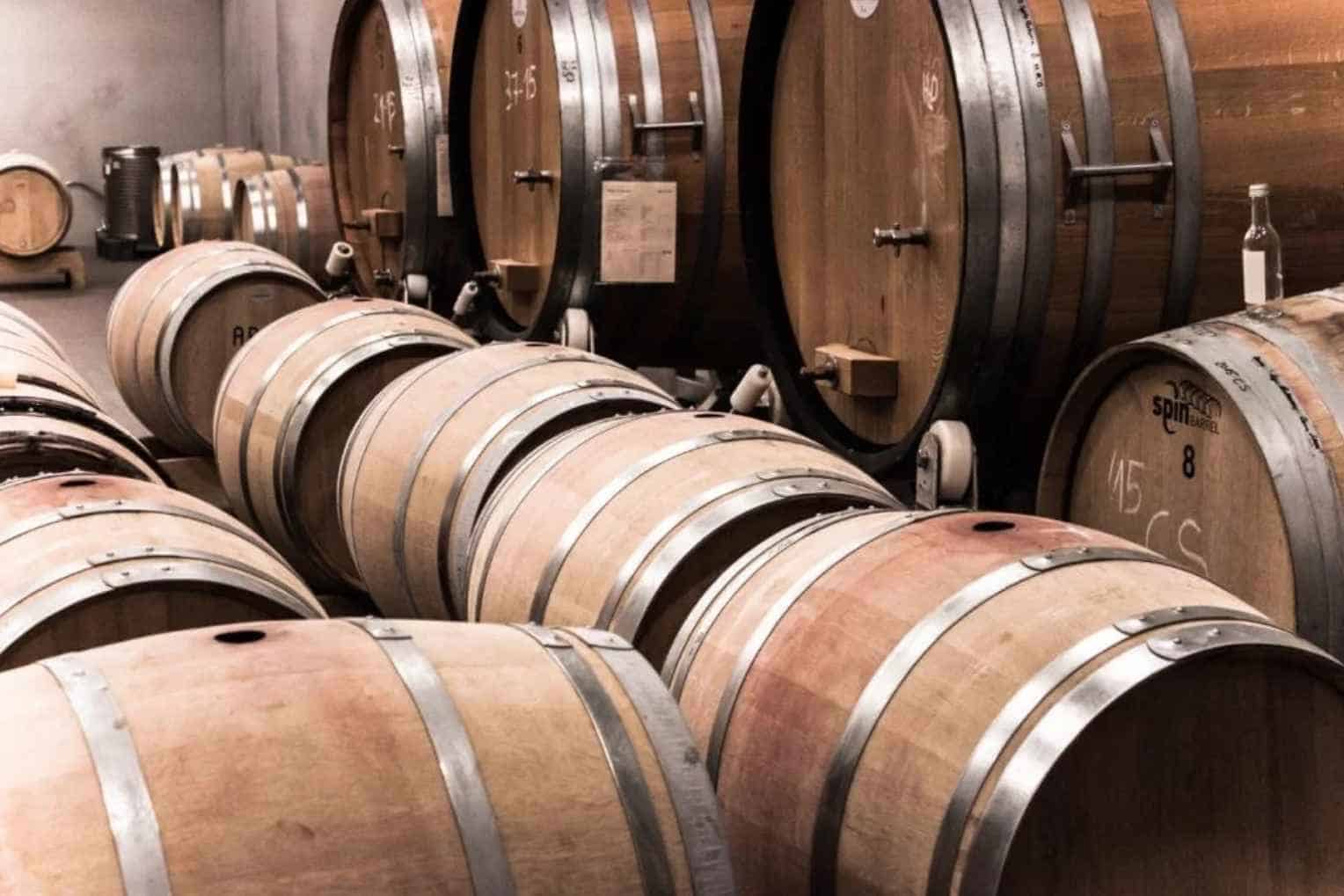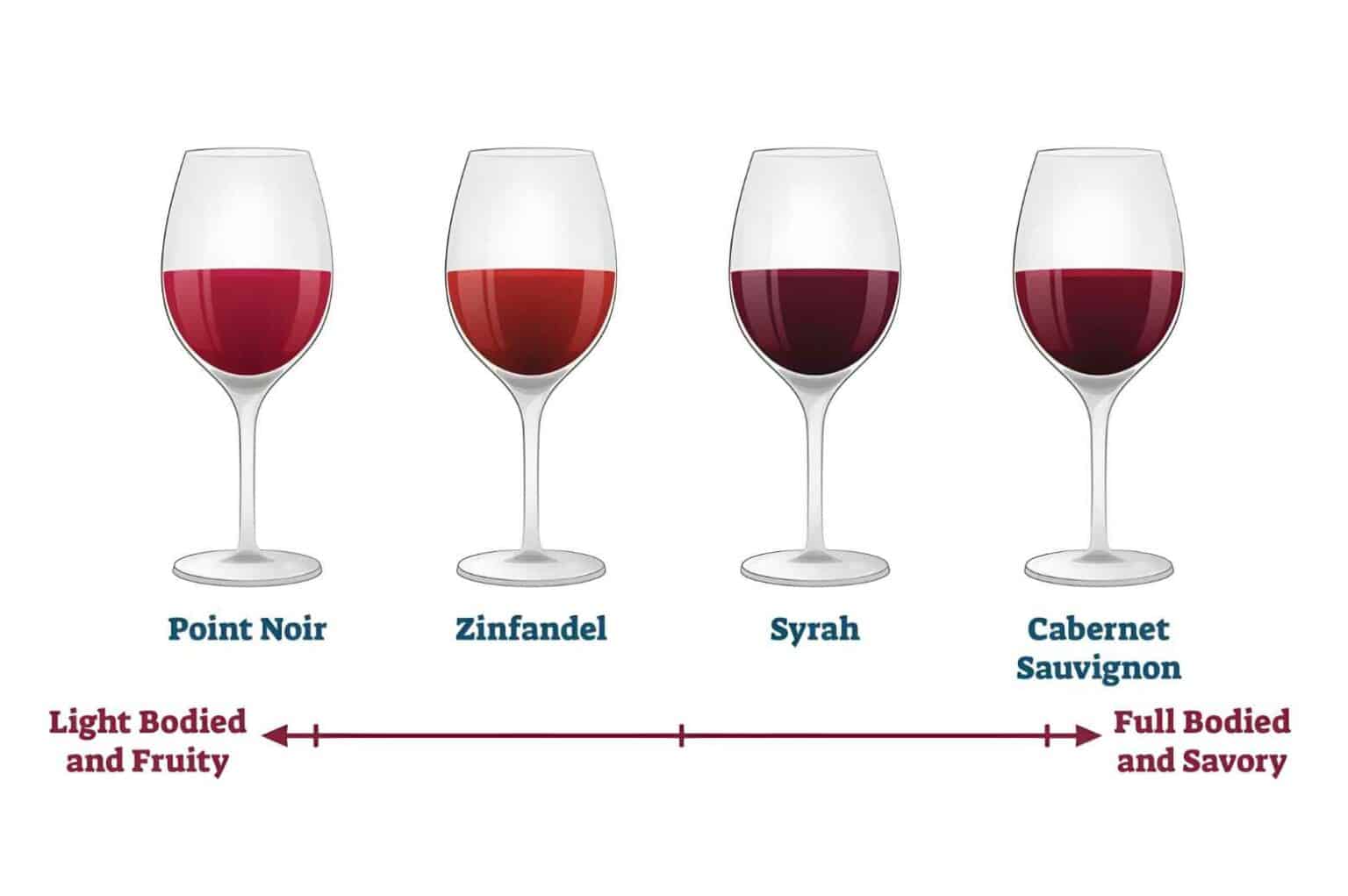Walking around a wine store, remembering how some wines have different feels in our mouths, makes you wonder. How are these wines categorized just by looking at their labels?
You can see light-bodied, medium, and full tags when you check their labels. What does full-bodied wine mean? How do they differ from each other; by their alcohol level, grape variety, or winemaking process?
If you are looking for a new favorite, the best way to differentiate the wines on the shelves is to know their wine body. Let’s learn more about the different body classifications and know a few examples to help you find your wine preference.
What is Wine Body?

The wine body describes the heaviness and richness of the wine on our palate. It is simply similar to differentiating whole milk and skim milk.
There is a difference between the milk, which is likely influenced by its fat content. This is quite similar to wines, the factors that make the wine structure can help you tell the difference.
Hence, the wine body is the primary method to analyze and learn more about different kinds of wines. What are the factors that heavily define the wine body?
Factors that Determine Wine Body

The wine body differs in the grape varietal, alcohol level, and viscosity of the wine. Each factor heavily influences the wine structures.
Grape Varietal
The grape variety is a major influence on the wine body, and its cultivated region tells much of it. Grapes grown in a warm climate have fuller bodies because the sun and heat help the grapes ripen earlier and have more sugar.
Meanwhile, grape varieties cultivated in regions with cool climates have less alcohol and tannin levels, more acidity, and a lighter body.
Alcohol Level
Alcohol content influences the aroma, taste, and viscosity of the wine. Here is the general rule for categorizing wine bodies based on their alcohol level:
- Light-bodied wines only have under 12.5% of alcohol. It has a refreshing texture in our mouths.
- Medium-bodied wines have 12.5% to 13.5% of alcohol content.
- Meanwhile, any wine that has 13.5% of alcohol is full-bodied.
Viscosity
You probably have heard the term, yet thought it is quite scientific and confusing. Viscosity is also known as liquid consistency or thickness.
Light-bodied wines are less viscous, while full-bodied wines have a thicker consistency. You can imagine this comparison with water and honey. Water is less dense, while honey is thicker.
Viscosity is relative to the alcohol level. Hence, wines with more alcohol content are more viscous.
Wine Body Classification

Knowing how the wine tastes is possible by determining its body classification. Although this is not the only characteristic influencing one’s wine drinking experience, it is the most apparent. Even those who know the difference in the wine body classifications can know which taste they prefer.
Light-Bodied Wine
Light-bodied wines are lean and delicate because they have light viscosity, similar to water. Moreover, light-bodied wines have low tannin levels and higher acidity levels, which are unlikely for them to give you a mouth-drying effect.
Pinot Noir is the most popular option for light-bodied wines. It is the lightest and has a smooth texture on your palate.
Medium-Bodied Wine
From the term “medium,” medium-bodied wines are between light and full-bodied. It does not have the same viscosity as light-bodied wine; it is not as watery. However, it does not have the same creaminess as a full-bodied wine, yet it is juicier and has a higher acidity level.
Merlot and Cabernet Franc are the common choice for medium-bodied wines. Wine enthusiasts call medium-bodied wines entry-level or food wines because it goes well with highly acidic foods.
Full-Bodied Wine
Full-bodied wine has no middle; its levels are on the extremes. A rich wine has higher alcohol, tannin, and sugar residual levels and has the lowest acidity level among the wine body classifications.
Its wine structure makes it highly viscous, comparable to drinking whole milk; it has a creamy sensation in your mouth.
Cabernet Sauvignon is the most preferred full-bodied red wine, while Chardonnay is the common choice for full-bodied white wine.
How is Full-Bodied Wine Different?

It is made evident in the description above that full-bodied wines have stronger alcohol content. However, what makes it different from the other wine bodies is its winemaking process, which has unique considerations.
Full-bodied wines undergo an oak aging process, which adds aroma and makes the wine taste less bitter. Winemakers can alter the wine body.
You can also easily differentiate full-bodied white and red wines from light-bodied ones from their appearance. Full-bodied white wine has a golden-yellow shade, while full-bodied red wines have a more intense shade of ruby red or purple.
Aside from its color, you can check the wine legs. Swirl the wine in the wine glass. As it forms legs on the glass, it moves down. Full-bodied wines have thick legs and move down slowly, while light-body wines disappear quickly.
Process of Winemaking Full-Bodied Wines

The process of winemaking requires precision, perseverance, and passion! You must be passionate about learning the different grape varieties and their components to make the best full-bodied wine. Grapes have several components: skin, fruit, pips, growing seasons, and region.
The winemaking method is slightly different for each wine body, but there is a general process that almost every wine goes through:
- Harvesting grapes
- Destemming and crushing harvested grapes
- Pressing
- Fermentation (Primary fermentation, cold stabilization)
- Clarification
- Aging and bottling
Making full-bodied wines have a slightly different process. For example, full-bodied wines have three fermentation processes. It goes through an additional phase called Malolactic fermentation.
This process results in higher lactic acid concentrations in wines, resulting in a thick, creamier, and bold taste. White wines that go through this fermentation process have buttery textures.
Moreover, the boldness of full-bodied wines is further improved by storing them in oak barrels. Wine aging is essential in increasing tannin levels and rich aroma, contributing to the wine body’s overall fullness.
Types of Full-Bodied Wines

Full-bodied wines are so rich in taste that you can drink them without complementary flavors. The higher alcohol level, high tannin level, and lower acidity give these wines a rich taste.
Full-Bodied White Wines
- Chardonnay
- Marsanne (Rhône Whites)
- Sémillon
- Trebbuiano
- Viognier
- White Rioja
Full-Bodied Red Wines
- Cabernet Sauvignon
- Malbec
- Petite Sirah
- Syrah
- Tannat
Additionally, the oak aging process of these wines has various influences on the taste. It adds okay flavors of vanilla and cedar and softens the flavors. Moreover, wine experts describe or use different terms for full-bodied wines. Some terms are rich, bold, structured, concentrated, and buttery.
You can easily find your preference and new favorite by knowing the differences in their richness and types.
However, looking for wine on a shelf full of them is overwhelming. It leads to questioning yourself about how to choose the best one or how you should start with your wine tasting journey.
How to Choose the Best Full-Bodied Wine

Choosing the best relies heavily on preferences; there is no one-size-fits-all, especially regarding wines.
Even when you fully know the flavor structure of the wine, your perception still matters. You have to try a couple of varieties to know which one you like. But here are some tips to have a good starting point.
- Read the label. You can know the quality of the wine based on its label. It should contain the region and country the wine is produced, the name of the producer, and its grape variety.
- If you are choosing a full-bodied red wine, choose older wines. Meanwhile, full-bodied white wines are best when young.
- Do not choose a wine because of its price. An expensive wine does not always mean it is the best choice.
If you have determined that you prefer full-bodied wine more, we have a few suggestions for food pairings.
Best Food Pairing for Full-Bodied Wines

Wines influence how food tastes. These food pairing tips for full-bodied wines will help you have a great dining experience.
Full-bodied red wines are best paired with Mexican dishes, BBQ, steak, and smoked meats. Meanwhile, full-bodied white wines are excellent when paired with creamy pasta, white sauce pizza, lobster, crab, and cheese.
The richness of the wine matches the meat character; how it softens the meat and complements its taste feels excellent in the mouth. Meanwhile, the creaminess and fat in the pasta sauce match the wine texture.
This is the general food pairing for full-bodied wines. You can always explore your preferences and pair them with whatever food you want. It might not be recommended in most food pairing guides, but if you like it, that’s great!
Final Takeaway
Wine enthusiasts know wine bodies like the back of their hand, but for beginners, it is difficult to understand the characteristics and differentiate them.
You can only absorb this information quickly if you experience it yourself. Join wine tasting events; it helps you compare full-bodied and light-bodied wines.

George Moore, co-founder of Wine Flavor Guru, is a charismatic entrepreneur with a rich background in California’s wine industry. Alongside Sylvia, he transformed a Sonoma County vineyard into a source of premium wines. George’s expertise in sourcing exceptional grapes and his approachable style make wine appreciation both accessible and engaging.
